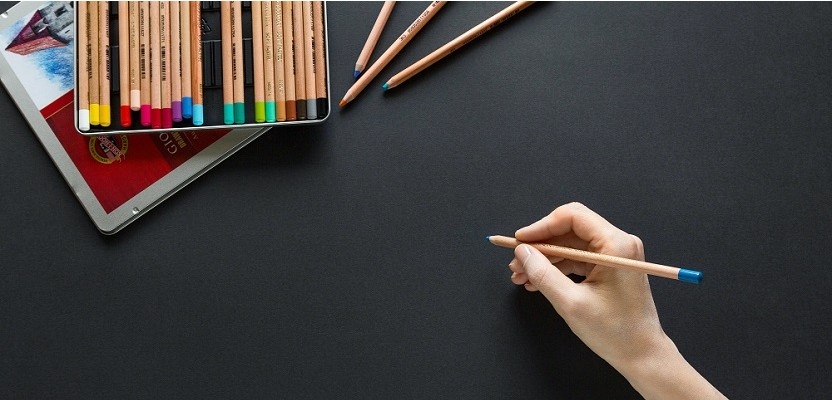With so much going on in the world today, new challenges, new responsibilities and new ways of working have taken some of the time and energy that would normally be focused on being creative. Feeling a bit scattered? Here are six tips to help you get back on track toward your best creative work.
Watch what you eat – While nutrition is known to have a direct impact on moods and overall well-being, did you know it can also impact how creative you are? A Journal of Health Psychology study found that eating more fruits and vegetables contributed to curiosity and creativity in a sample of 405 adults ages 17-25. And, according to an Eat this Not That blog post, green tea can help you avoid “creativity-killing crashes” while popcorn packs a “one-two punch of B6 and B12 vitamins that boost short-term memory and concentration.” Try experimenting with known brain-boosters like those to determine what works best for your own brand of creativity, like this writer did with some pumpkin soup in a Medium article. (She also offers some other suggestions to try.)
Step away when you need to – Sometimes you can stare and stare at your computer screen, and those creative thoughts just refuse to jump onto the page. This could mean a need to step away from your computer. A Stanford University study found that walking, even indoors on a treadmill, increased creative output by as much as 60 percent. And a study published in the Public Library of Science (PLOS) found that a four-day immersion in nature (and its corresponding disconnection from multimedia and technology), increased performance on a creative problem-solving task by 50 percent.
Make some noise - You can also change up what you hear in the background. A University of Illinois study examined the impact of sound on creativity, with the level of noise commonly found in a coffee shop (about 70 decibels) spurring more creative performance than a quiet 50 decibels or a blender’s 85 decibels. And a Quartz article points out the benefits of listening to music to get your work done—with lyrics when working on more repetitive or mundane tasks and without when you need to learn new information or focus your attention on something like being creative.
Shut everything else down – Working from home, as many of us still are, brings a new set of challenges to creativity. In addition to meetings, emails and instant messages, we now have loved ones that pop in to ask a “quick question.” It’s okay to mark yourself as “busy” and/or close the door, when you need some focused time for creativity. We also offer up “7 tips to help you stay focused in the new world of work” in a Hightail blog post.
Give your brain some rest – This might sound counterintuitive to coming up with great creative ideas, but studies have found that quieting down the part of your brain that processes to-do lists can help other types of solutions to percolate from your subconscious. “Once we stop distracting the brain with menial everyday worries and tasks, we release it to work at its maximum speed long enough for the brilliant ideas that are constantly fired at us to come into our awareness,” according to a Huffington Post article. The article suggests creating a “solitary, calm, comfy setting” as one way to achieve that. Meditation is another approach that worked for Walt Disney Co., according to a South Florida Reporter article. “The company noticed a dramatic increase in creativity after employees meditated on certain projects and ideas,” according to the article.
Give your brain some exercise – Contrary to that previous tip, your brain also does need some exercise to get those creative juices flowing. In a recent Forbes article, Monica Kang of InnovatorsBox says that “being curious is critical to being creative.” She suggests using phrases like “I wonder …” or “I noticed …” to reframe thinking into a more curious approach. For example, “I wonder why this disagreement is making me so upset” can help reframe a moment into “an opportunity for learning and growth.”.
A Medium article outlines some exercises to elevate your creative thinking, including one where you choose an object that catches your eye—and then ask yourself what makes it interesting, what would make it more interesting and what the story is behind it. Exercises like that can also test your observation skills, in addition to helping to cultivate your imagination.
There are also a number of apps that can help ignite creativity. Brainsparker, for example, features “creativity prompts,” such as trigger words, quotes, images, actions and questions to spark your creative thoughts.
Now that you know how to embrace your creativity, read our Creativepool post about how be a better partner to your clients and keep them coming back for more of your creative ideas.



